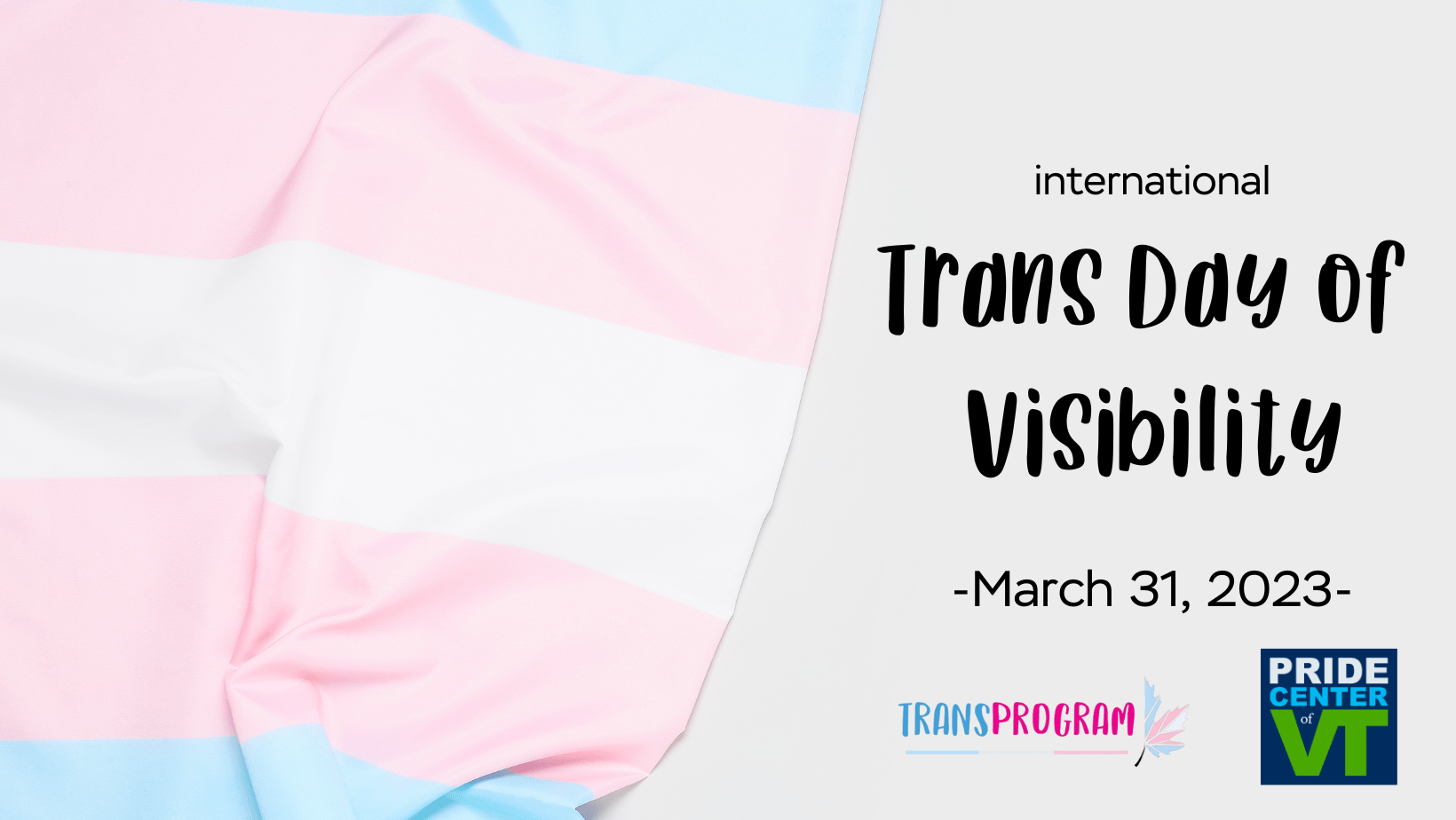Supporting Transgender Individuals: Practical Allyship On International Transgender Day

Table of Contents
Understanding Transgender Identities and Terminology
Defining Gender Identity and Expression
It's crucial to understand the difference between sex assigned at birth and gender identity. Sex assigned at birth is the sex designation given at birth based on biological factors. Gender identity, however, is an individual's internal sense of being a man, woman, both, neither, or somewhere else along the gender spectrum. Gender expression refers to how someone outwardly presents their gender through clothing, behavior, and other means. This is distinct from both sex assigned at birth and gender identity.
Key terms to understand include:
- Transgender: An umbrella term for people whose gender identity differs from the sex they were assigned at birth.
- Cisgender: A term for people whose gender identity aligns with the sex they were assigned at birth.
- Non-binary: An umbrella term for people who do not identify exclusively as male or female. This includes individuals who identify as gender fluid, agender, bigender, etc.
- Gender fluid: Individuals whose gender identity changes over time.
Examples of respectful language:
- Always use a person's preferred name and pronouns.
- If unsure, politely ask: "What pronouns do you use?"
- Correct yourself immediately and sincerely if you make a mistake. A simple "I apologize, I'll use [correct pronoun]" is sufficient.
- Avoid making assumptions about someone's gender identity or expression.
Common Misconceptions and Myths
Many misconceptions surround transgender identities, fueled by misinformation and prejudice. Addressing these with factual information is vital for effective allyship.
- Misconception: Being transgender is a choice.
- Reality: Gender identity is not a choice; it's an inherent aspect of a person's identity.
- Misconception: Transgender people are trying to "trick" others.
- Reality: Transgender individuals are simply living authentically and seeking acceptance.
- Misconception: Transgender people are a threat to cisgender people.
- Reality: This is a harmful stereotype. Transgender people are no more likely to commit violence than cisgender people.
Addressing these misconceptions requires empathy and a willingness to engage in respectful dialogue.
Practical Steps to Show Allyship
Respecting Pronouns and Names
Using a person's correct name and pronouns is fundamental to showing respect. This seemingly small act can have a significant positive impact on a transgender person's well-being.
- Tips for remembering pronouns: Use name tags with pronouns, write them down, and politely ask if unsure.
- Creating a supportive environment: Encourage others to correct each other respectfully when mistakes are made. Make it clear that using correct pronouns is expected and valued.
Educating Yourself and Others
Becoming a strong ally requires continuous learning and advocacy. Engage with credible resources to expand your understanding of transgender issues.
- Trustworthy resources: The Human Rights Campaign (HRC), GLAAD, and PFLAG are excellent starting points.
- Engage in respectful dialogue: Actively listen to transgender voices and experiences. Be open to learning and challenging your own biases.
Advocating for Inclusive Policies
Supporting legislative changes and policies that protect transgender rights is crucial.
- Contact elected officials: Advocate for non-discrimination laws in employment, housing, healthcare, and education.
- Support LGBTQ+ organizations: Donate your time or money to organizations working for transgender rights.
- Participate in peaceful protests or rallies: Use your voice to advocate for change.
Creating Inclusive Environments
Supporting Transgender People in the Workplace
Creating an inclusive workplace is essential for the well-being of transgender employees.
- Gender-neutral restrooms: Provide accessible and safe restroom options for all genders.
- Inclusive dress codes: Avoid gender-specific dress codes.
- Anti-discrimination policies: Implement and enforce strong policies that protect transgender employees from harassment and discrimination.
- Support and resources: Provide access to mental health resources and employee assistance programs.
Supporting Transgender Youth and Families
Transgender youth and their families face unique challenges. Providing support and understanding is vital.
- Affirming care: Support access to gender-affirming care, including medical and psychological care.
- Mental health support: Ensure access to mental health resources that are knowledgeable about transgender issues.
- Education and acceptance: Advocate for inclusive education policies and create supportive environments in schools and communities.
Conclusion
This International Transgender Day of Visibility, let's reaffirm our commitment to supporting transgender individuals. By understanding transgender identities, actively respecting pronouns and names, educating ourselves and others, and advocating for inclusive policies, we can create a more just and equitable world. Remember, true allyship involves consistent effort and a lifelong commitment to learning and growth. Let’s continue to work together towards a future where every transgender person feels safe, respected, and valued. Continue learning and actively participate in supporting transgender individuals; your allyship makes a difference.

Featured Posts
-
 Edmonton Oilers Draisaitl Exits Game Due To Injury
May 10, 2025
Edmonton Oilers Draisaitl Exits Game Due To Injury
May 10, 2025 -
 The Beyonce Effect Cowboy Carter Streams Double After Tour Kickoff
May 10, 2025
The Beyonce Effect Cowboy Carter Streams Double After Tour Kickoff
May 10, 2025 -
 Three Years Of Breaches Cost T Mobile 16 Million In Fines
May 10, 2025
Three Years Of Breaches Cost T Mobile 16 Million In Fines
May 10, 2025 -
 Uy Scuti Release Date Young Thug Offers Clues On New Album
May 10, 2025
Uy Scuti Release Date Young Thug Offers Clues On New Album
May 10, 2025 -
 The Brutal Reality Of Racist Violence One Familys Tragedy
May 10, 2025
The Brutal Reality Of Racist Violence One Familys Tragedy
May 10, 2025
